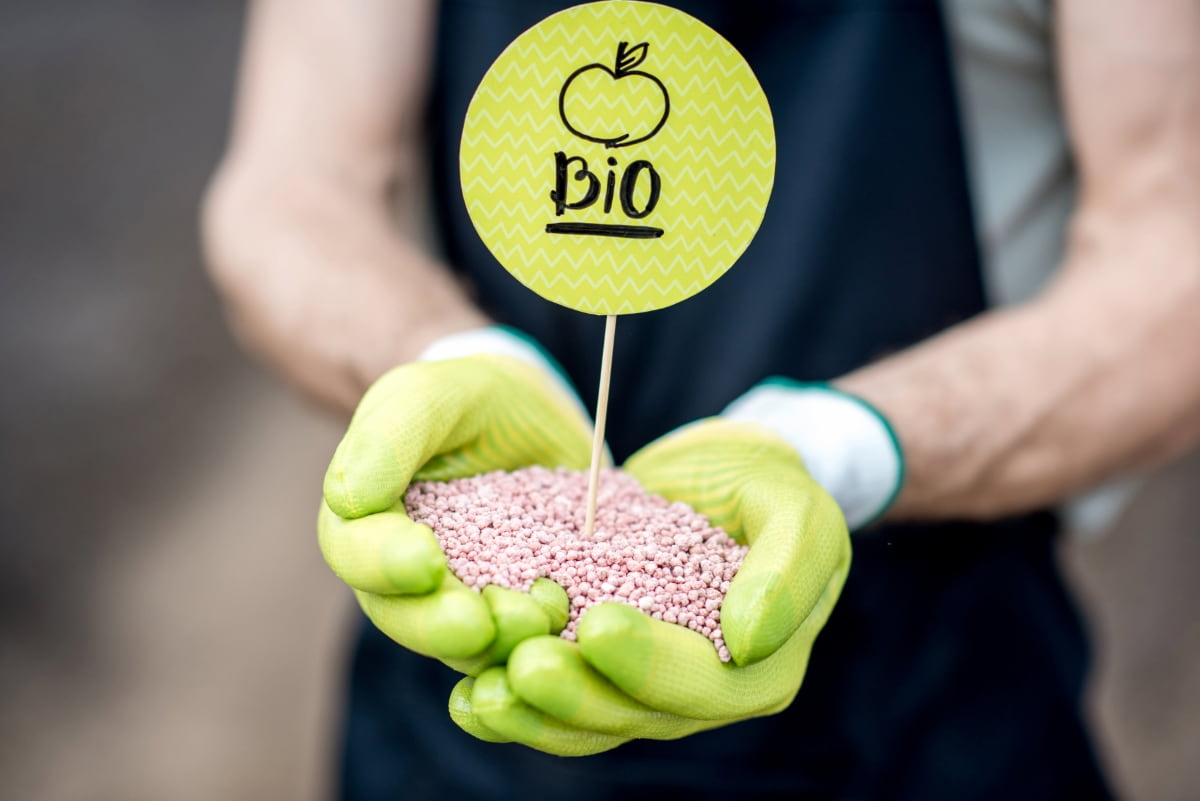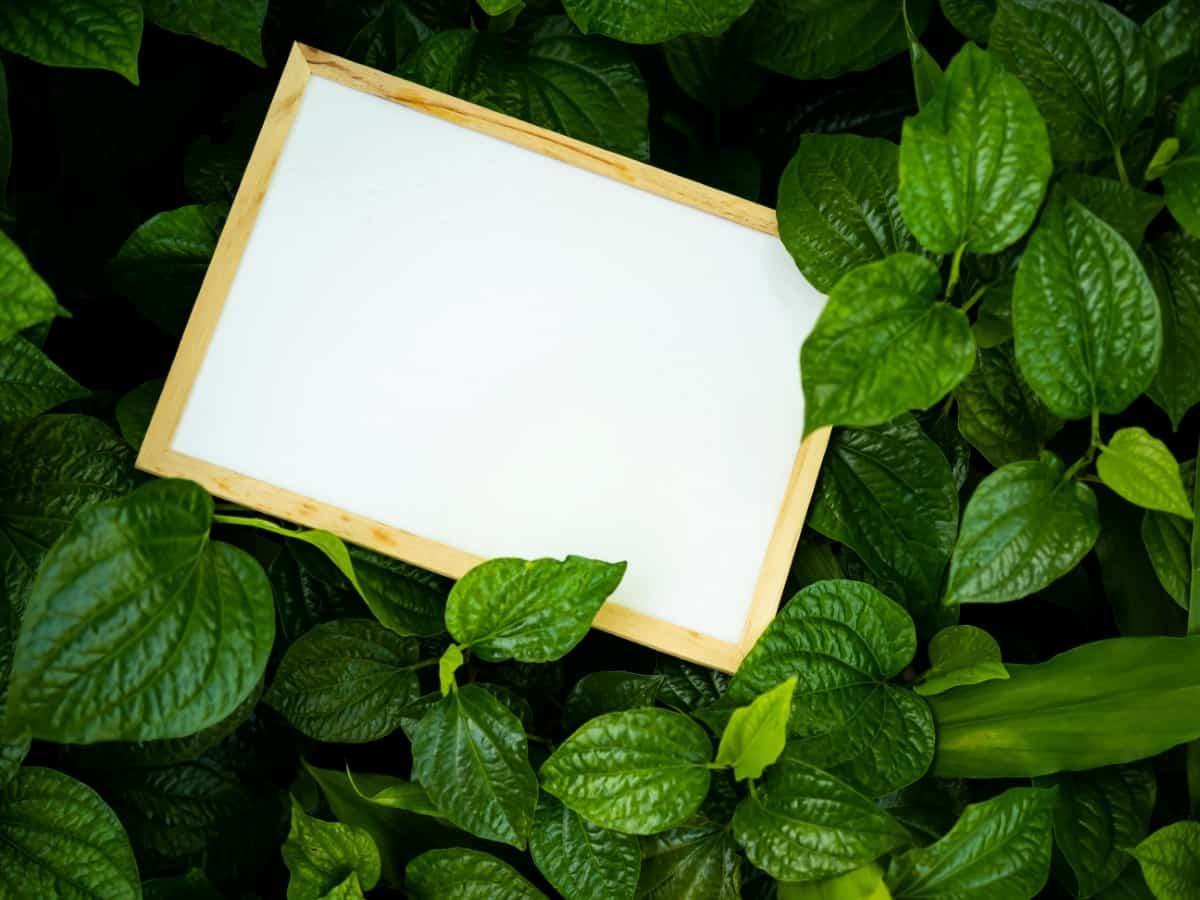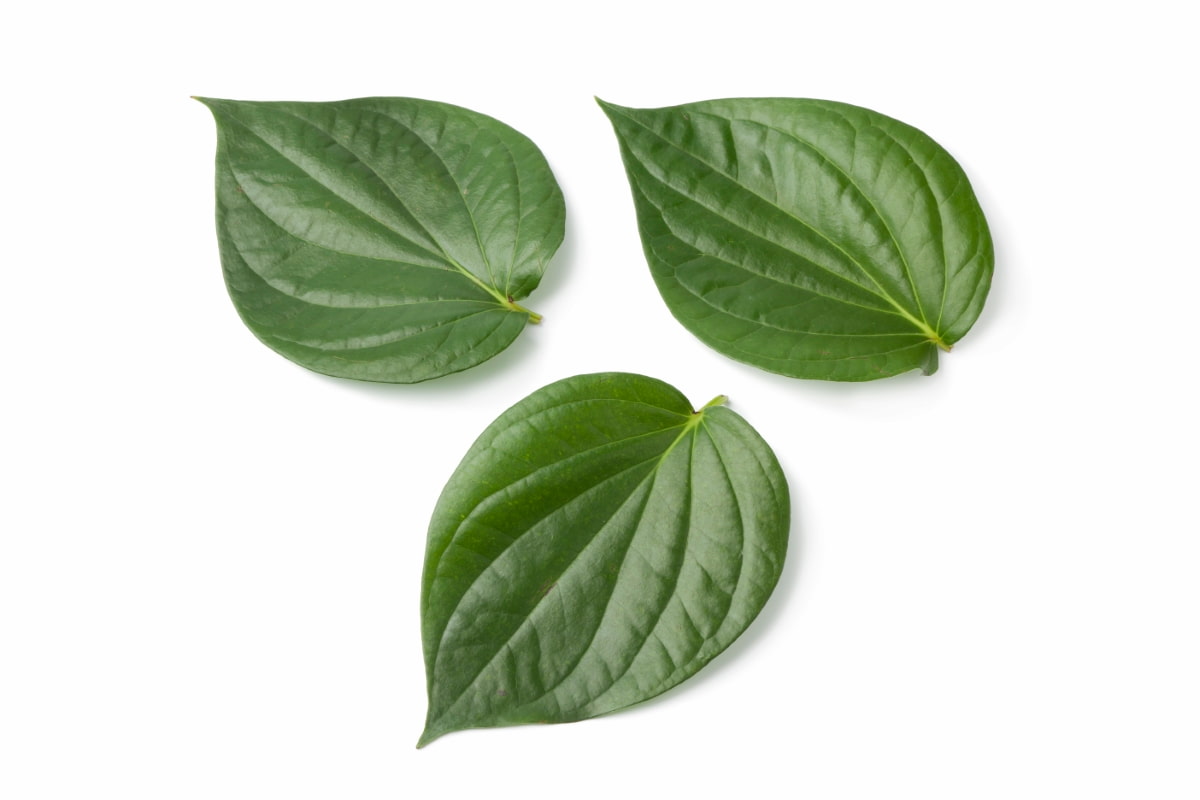Betel leaf plants (Piper betle) require specific nutritional elements for optimal growth and development. These plants thrive in well-drained, loamy soil with pH ranges between 5.8 and 6.6. Regular fertilization, balanced with the plant’s growth stages, supports the production of high-quality betel leaves. Additionally, maintaining proper moisture levels and ensuring good sunlight exposure contribute to the plant’s health, enhancing its yield of flavorful and aromatic leaves commonly used in cultural and culinary practices.

Best Fertilizers for Betel Leaf
Organic Fertilizers
For cultivating betel leaf plants with abundant and larger bushy leaves, organic fertilizers play a pivotal role in providing essential nutrients and promoting soil health. Consider incorporating well-decomposed organic matter such as vermicompost, aged manure, bone meal, or seaweed extract into the soil. This enhances soil structure and nutrient content. Additionally, use organic fertilizers rich in nitrogen, phosphorus, and potassium, such as fish emulsion, bone meal, and seaweed extracts, to support overall plant growth and leaf development.
Apply these organic fertilizers during the growing season, adjusting the frequency based on the specific requirements of your betel leaf plants. Mulching with organic materials helps retain soil moisture and regulate temperature, creating a favorable environment for robust leaf production. Regularly monitor the plant’s health and adjust the fertilizer application accordingly to ensure a steady supply of nutrients for optimal leaf size and abundance.
NPK Fertilizers
To enhance the growth of betel leaf plants and promote the development of more substantial and bushier leaves, a balanced NPK (Nitrogen, Phosphorus, Potassium) fertilizer is crucial. Look for a fertilizer with a higher nitrogen ratio to stimulate lush foliage. Nitrogen facilitates leaf formation and overall plant vigor. Phosphorus aids in root development, while potassium contributes to disease resistance and sturdy stems.
Select a fertilizer with a ratio that emphasizes higher nitrogen levels (e.g., 10-5-5). Apply the fertilizer during the growing season, following recommended dosage guidelines. Regular and consistent application of NPK fertilizers will support the betel leaf plant’s nutritional needs, resulting in more abundant, lush, and healthy foliage.
Slow-Release Fertilizers
Utilizing slow-release fertilizers is advantageous for maximizing the growth of betel leaf plants and achieving larger, bushier leaves. These fertilizers provide a gradual and sustained release of nutrients over an extended period, ensuring a continuous supply for the plant’s needs. Choose a slow-release fertilizer with a balanced NPK ratio, emphasizing higher nitrogen content for robust foliage.
In case you missed it: Betel Leaf Farming Project Report: Economics, Costs, and Profits in 1-Acre Cultivation of Betel Vines

This method minimizes the risk of over-fertilization and nutrient leaching. Apply the slow-release fertilizer according to the product’s instructions, typically once or twice during the growing season. The controlled nutrient release promotes steady growth, resulting in more significant and healthier betel leaf clusters.
Liquid Fertilizers
Liquid fertilizers offer a convenient and efficient way to boost the growth of betel leaf plants, encouraging larger and bushier leaves. Opt for a balanced liquid fertilizer with a higher nitrogen concentration to promote vigorous foliage development. These fertilizers are quick-acting, allowing for rapid nutrient absorption by the plant.
Dilute the liquid fertilizer according to the manufacturer’s recommendations and apply it directly to the soil around the betel leaf plants. Regular, bi-weekly applications during the growing season support continuous nutrient availability, fostering lush and robust foliage. The liquid form ensures swift nutrient absorption, contributing to the overall health and size of betel leaves.
Micronutrient-Rich Fertilizers
Employing micronutrient-rich fertilizers is crucial for enhancing the growth of betel leaf plants and achieving larger, bushier leaves. Betel leaves benefit from trace elements like iron, manganese, and zinc for optimal development. Choose a fertilizer containing these micronutrients to prevent deficiencies and promote vibrant foliage.
Apply the micronutrient-rich fertilizer as directed, ensuring proper absorption by the plant. Regular application, especially during periods of rapid growth, supports the synthesis of chlorophyll, which is essential for lush and healthy leaves. This targeted approach addresses specific micronutrient needs, contributing to the overall vitality and size of betel leaf clusters.
pH-Balanced Fertilizers
Using pH-balanced fertilizers is crucial for optimizing the growth of betel leaf plants and achieving larger, bushier leaves. Betel leaf plants thrive in slightly acidic to neutral soil with a pH range between 5.8 and 6.6. Selecting a fertilizer that maintains this pH range ensures that nutrients are readily available for absorption. Imbalanced pH levels can hinder nutrient uptake, affecting the plant’s overall health and leaf development.
In case you missed it: Everything You Need to Know about Propagation Techniques for Betel Leaf Plants

Choose a fertilizer specifically formulated to maintain or adjust soil pH, preventing deficiencies and promoting robust foliage. Regular application of pH-balanced fertilizers supports the betel leaf plant’s nutrient absorption efficiency, contributing to the production of more substantial and healthier leaf clusters.
Foliar Fertilization
Utilizing foliar fertilization is an effective strategy to enhance the growth of betel leaf plants and encourage larger, bushier leaves. This method involves applying a liquid fertilizer directly to the leaves, allowing for rapid nutrient absorption. Choose a balanced foliar fertilizer with a focus on nitrogen for lush foliage. Spray the solution onto the betel leaf surfaces, ensuring thorough coverage.
Foliar feeding provides a quick nutrient boost, especially during periods of increased growth. This approach addresses nutrient deficiencies promptly, promoting vibrant and healthy leaves. Regular foliar fertilization complements soil applications, contributing to the overall size and vitality of betel leaf clusters.
Natural and Sustainable Fertilizers
Opting for natural and sustainable fertilizers is an eco-friendly approach to fostering the growth of betel leaf plants and promoting larger, bushier leaves. Incorporate well-decomposed organic matter like compost or aged manure into the soil, enriching it with essential nutrients and improving its structure. Utilize natural sources such as neem cake, bone meal, or fish emulsion, which provide a balanced mix of nutrients, including nitrogen, phosphorus, and potassium.
These alternatives enhance soil fertility while minimizing environmental impact. Sustainable practices (like cover cropping and crop rotation) also contribute to long-term soil health. By adopting these natural and sustainable fertilizer methods, betel leaf plants can thrive, producing abundant, lush foliage in an environmentally conscious manner.
Best Practices for Fertilizing Betel Leaf Plants
- Start with well-decomposed organic matter like compost or aged manure to enrich the soil.
- Choose a balanced organic or slow-release fertilizer with an emphasis on nitrogen for robust foliage.
- Apply fertilizers during the growing season, adjusting the frequency based on plant needs.
- Incorporate micronutrient-rich fertilizers to prevent deficiencies and promote overall plant health.
- Maintain soil pH between 5.8 and 6.6 for optimal nutrient absorption. Consider foliar fertilization for quick nutrient uptake.
- Implement natural and sustainable fertilizers to minimize environmental impact.
- Regular monitoring, proper watering, and sunlight exposure complement fertilization, ensuring the betel leaf plant thrives and produces abundant, healthy leaves.
In case you missed it: Fertilizing Potted Betel Leaf: Organic, Natural, Homemade, NPK Ratio, When and How to Apply

Conclusion
In conclusion, achieving thriving betel leaf plants with more substantial and bushier leaves involves a strategic approach to fertilization. Integrating sustainable practices enhances plant health. Consistent application, coupled with vigilant care, results in the optimal growth of betel leaf plants, yielding an abundance of large, vibrant leaves for culinary and cultural purposes.
- Feed Your Flock for Less: Top 10 Tips to Save on Chicken Feed
- Ultimate Guide to Ossabaw Island Hog: Breeding, Raising, Diet, and Care
- Hatching Answers: The Top 10 Reasons Your Chickens Aren’t Laying Eggs
- Eggs and Economics: Breaking Down the Cost of Raising Backyard Chickens
- Defend Your Greens: Proven Methods to Keep Iguanas Out of Your Garden
- Ultimate Guide to Cinnamon Queen Chicken: A Comprehensive Guide for Beginners
- Ultimate Guide to California Tan Chicken: Breeding, Raising, Diet, Egg-Production and Care
- Ultimate Guide to Marsh Daisy Chicken: Breeding, Raising, Diet, and Care
- 10 Types of Chicken Farming Businesses You Can Start for Profits